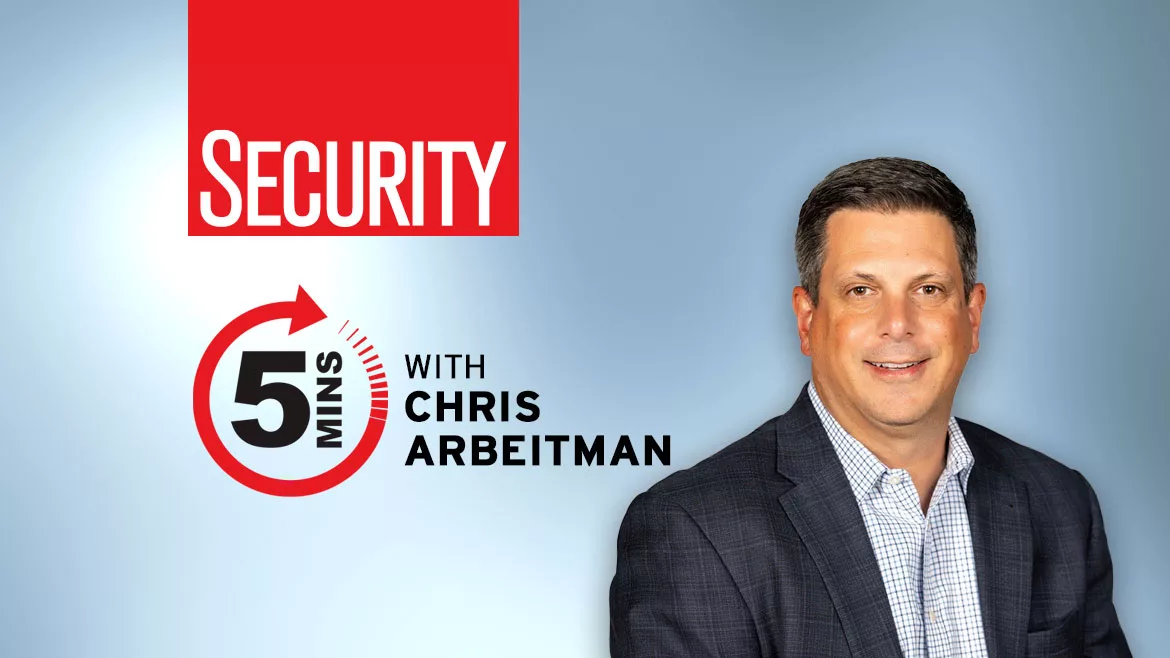5 Minutes With
Perspectives on safety and security technology in education

Image courtesy of Arbeitman
Safety in education requires a layered approach, often involving multiple forms of technology. How can schools use technology to enhance campus safety? Here, we talk with Chris Arbeitman, Vice President, Market and Business Development at Metrasens.
Security magazine: How can detection technology shape the safety landscape in educational environments?
Arbeitman: School administrators are prioritizing safety, placing it at the top of their agenda. One trend is the emergence of more technology options for schools, sparking increased interest and debate on priorities. School districts need to take a thoughtful approach to technology choices, aligning them with a well-planned strategy that emphasizes safety. This strategy should encompass not only the school building but also extend to sporting events, board meetings, graduation ceremonies and more.
Advanced threat detection systems utilizing magnetic detection technology offer a proactive means of identifying potential risks like guns, knives, box cutters, and even vapes. These technologies complement existing security protocols, providing an additional layer of defense against concealed weapons. Additionally, there is a growing desire for less intrusive technologies that can seamlessly blend into the educational environment. Consequently, advanced threat detection systems with a minimal footprint and multi-purpose capabilities are increasingly favored. These versatile systems can be standardized across multiple screening needs and used as non-fixed units, enhancing both efficiency and adaptability in various security scenarios.
Security magazine: How can technology (such as AI) enhance safety at school events, especially in preventing and responding to weapon-related incidents?
Arbeitman: Technology plays a significant role in enhancing safety at school events within a layered approach. This includes traditional security measures and utilizing advanced magnetic detection technology that provides a non-invasive, passive search method without harmful signal emissions. Additionally, there is a growing trend of schools seeking portable and user-friendly designs for efficient and respectful screening, ensuring a secure environment without compromising accessibility. Effective security incorporates both technology and procedural strategies, such as clear bag policies and no reentry rules, to create a comprehensive safety environment.
AI has garnered substantial attention and generated widespread excitement, but it has also become diluted in its ubiquity. This holds true for security technology as well. The difficulty lies in reconciling practical implementation with the lofty promises made. While AI holds great potential in many aspects, there is also a tendency to overpromise and underdeliver. There is a rush to incorporate AI, often with a loose interpretation of its capabilities. However, it is important to recognize that security still relies on the core pillars of people, process and technology. AI is not a standalone solution; it is part of the broader landscape of security technology.
Security magazine: How important is community involvement in school security, and what should the school do to engage with the community?
Arbeitman: Community involvement is essential. Technology providers need to work closely with school administrators to engage school boards and local stakeholders, including parents and students. They should organize discussions to explain the necessity and implementation of safety measures, and be prepared to participate in an open and honest discussion. This involvement helps build trust and ensures that the community understands and supports the security measures implemented.
Security magazine: What are the future trends in the integration of technology and safety measures in school settings?
Arbeitman: Future trends will likely continue to focus on the integration of advanced technologies with traditional security measures to develop comprehensive and adaptive security solutions. These trends will emphasize the importance of creating safe yet open and inviting educational environments, balancing technological advancements with procedural strategies to address evolving security concerns effectively.
School districts have learned that flexibility in safety planning is essential. This flexibility allows them to tailor safety protocols to the unique needs and characteristics of their communities. The integration of detection systems represents a proactive step towards bolstering security, with the potential for more schools to follow suit. By investing in these technologies, school districts aim to create secure environments not only within school buildings but also at interscholastic athletic events, school ceremonies and school board meetings.
Based on these learnings and an ongoing commitment to safety, more administrators and school athletic directors are incorporating detection technology with other security measures to create a comprehensive security profile. Looking ahead, conversations surrounding safety and security in school districts are likely to continue focusing on proactive measures and more investments in advanced detection systems.
The goal remains steadfast: to ensure a secure environment across all school facilities, including halls, campuses and extracurricular events. By staying abreast of best practices and advancements in safety technology, school districts can adapt and evolve their safety plans to meet the evolving needs of their communities.
Looking for a reprint of this article?
From high-res PDFs to custom plaques, order your copy today!








